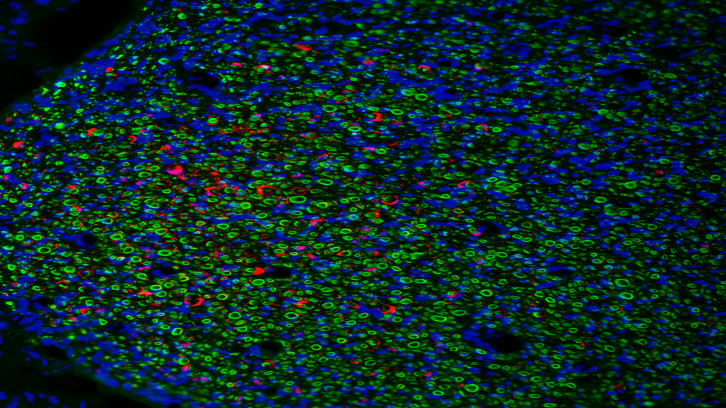An innovative low-cost device for serious peripheral nervous injuries

Recovering the motor functionality and sensation of a limb after suffering a serious injury requires the implantation of a prosthesis or nerve conduit, and of an electronic device (peripheral nerve interface) that connects the nerve to the muscle. Researchers from the UAB Institute of Neurosciences, in collaboration with the Sant'Anna School in Pisa, Italy, have developed an innovative device (Regenerative Cuff Electrode, RnCE) that integrates both functionalities and that has shown good results in animal models. The manufacturing method allows the design of the device to be easily modified by adjusting it to different situations. In addition, manufacturing costs and time are reduced.
Peripheral nervous system injuries produce the total or partial loss of motor, autonomic and sensory functions distal to the injury. Unlike the central nervous system, the peripheral nervous system can regenerate after suffering certain injuries. However, this regenerative capacity has a limit; for example, after a complete section of the nerve where the ends cannot be surgically rejoined. In these cases, it is necessary to apply other therapeutic strategies. Nerve conduits implanted between the ends of the nerve make it possible to bridge the gap produced by the injury, facilitating regeneration. But, even though the nerve regenerates, the connection between the nerve and the muscle can be permanently lost and, therefore, the function will not be recovered.
Peripheral nerve interfaces are electronic devices implanted in the nerve that bypass the lost connection. The combined use of a prosthesis together with an interface is called a neuroprosthesis and is a strategy capable of restoring the lost functionality. This technology, used in patients with amputations or with severe nerve injuries, is based on the recording of motor nerve signals that are transmitted to the prosthesis and on the stimulation of sensitive nerve fibers so that the patient regains movement and sensation respectively.
In this research, a novel device has been developed, called Regenerative nerve Cuff Electrode (RnCE), which combines these two concepts (nerve conduit and peripheral nerve interface) and is part of the class of regenerative nerve interfaces. The design has been manufactured following the “Print and Shrink” method, allowing to reduce both costs and tailoring time. This method consists of printing the layers that make up the device in several steps and then undergoes a heat miniaturization process. The structure of the device is made of polyolefin, while the electric part is made of PEDOT: PSS, a conductive polymer.
Figure 1: Scheme of the regenerative cuff electrode (RnCE) implantation. The sciatic nerve is exposed (1) and cut (2). Then, the RnCE is implanted and sutured to the ends of the sectioned nerve (3). After 90 days, regeneration of the sciatic nerve is observed (4).
This new device has been tested in an animal model by researchers from the Institute of Neurosciences at the UAB. Devices were implanted in rat sectioned sciatic nerves. After 3 months, devices were shown to allow regeneration of the sciatic nerve with a similar outcome than other nerve conduits. Furthermore, its design did not produce nerve compression as in other regenerative conduits. In addition, the device was also able to stimulate the regenerated sciatic nerve producing a muscular response with good selectivity.
The advantages of this new device lie in its easily modifiable design that is quick and cheap to manufacture, combined with the capabilities of a conduit and a nerve interface. Furthermore, as it is a transparent device, it is compatible with optogenetic studies. Future research will evaluate its ability to record nerve signals, generate electrical fields to enhance regeneration, or a possible connection to an external prosthesis.
Bruno Rodríguez Meana, Jaume del Valle Macià, and Xavier Navarro Acebes
Universitat Autònoma de Barcelona.
Department of Cellular Biology, Physiology and Immunology.
Institute of Neurosciences.
Faculty of Medicine.
References
Ferrari LM, Rodríguez-Meana B, Bonisoli A, Cutrone A, Micera S, Navarro X, Greco F, Del Valle J. All-Polymer Printed Low-Cost Regenerative Nerve Cuff Electrodes. Front Bioeng Biotechnol 2021; 9:615218. doi: 10.3389/fbioe.2021.615218.


